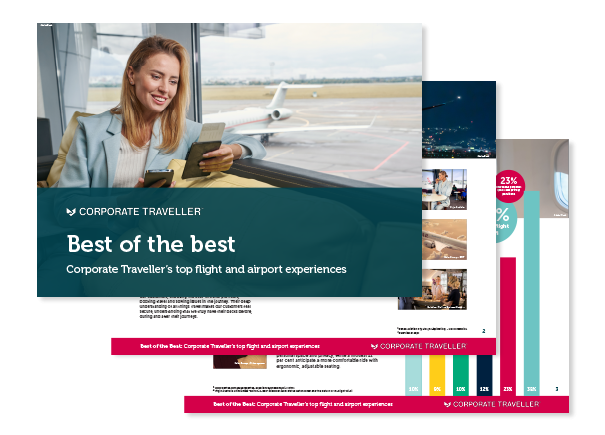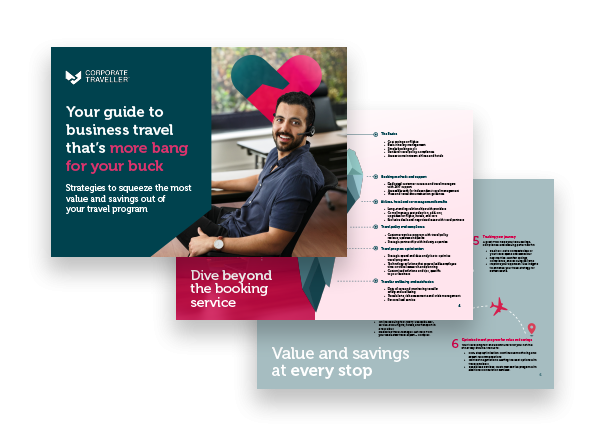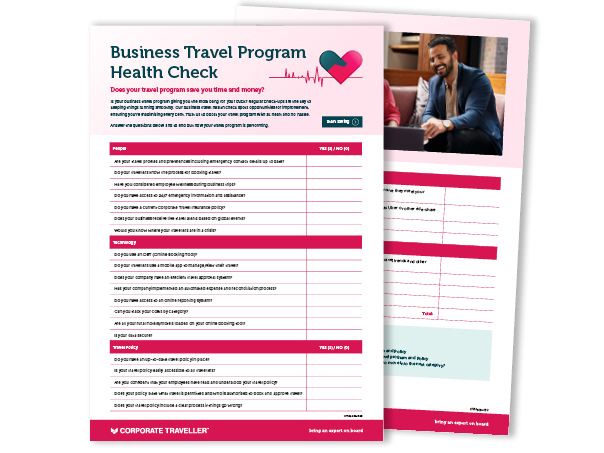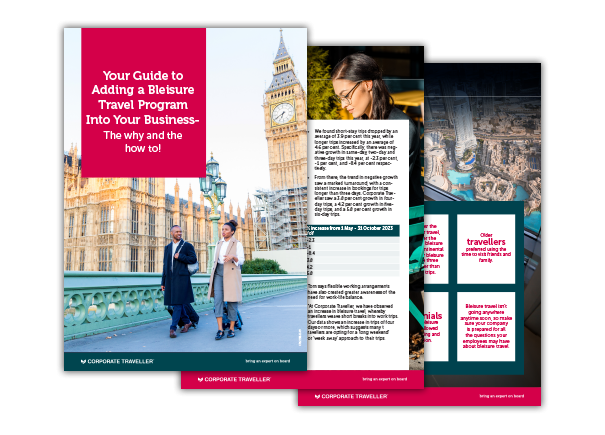
5 trends to consider for your travel program
The results of the Jan-Mar 2023 trends report powered by our sister company, FCM Consulting, are in! And now that borders and quarantine measures have relaxed, we’re seeing a renewed confidence in business travel. While travellers have taken to the skies, many businesses are facing other challenges. So, as you move through the year, keep in mind these top 5 considerations for your travel program:
1. Impact on travel during inflationary periods
In 2022, global inflation rates were high at 8.8% and are predicted to fall to 6.6% in 2023 and 4.3% in 2024. The pressure on the price of products, utilities, services, and general cost of living remains, however.
Loads of businesses are feeling the effects of inflation through higher costs for goods and services, as well as increased wages for their staff. If your travel program is already under budget constraints, these additional costs may need to be absorbed or passed on through other means.
2. The rising cost of aviation fuel
Although, aviation fuel prices have been a major factor in the cost of travel for many years, this trend has continued into 2023. In January of 2023, jet fuel prices rose sharply above $200 AUD per barrel as Chinese flight activity tripled within a month. The increase was largely due to the recovery of air travel after the global pandemic, and rising demand for air cargo services in China.
Fortunately, jet fuel prices have begun trending downward since then - settling around $145 AUD per barrel, but businesses should still be aware that fluctuations in this price could lead to higher overall costs when planning their next trip.
3. New possibilities in airline distribution and NDCs
In early 2023, American Airlines made a major shift in the distribution of its air content by removing it from the Global Distribution System (GDS). This move marked a turning point for the airline industry, which has been waiting for more carriers to follow suit and embrace direct-connect technology.
Direct-connect technology allows airlines to manage their business more efficiently and respond to market changes such as fuel prices or increased demand during peak season. By utilizing this system, airlines can make quick decisions about pricing and availability without relying on third parties.
On the NDC front, there’s a load of excitement, as we are finally upgrading a 1960s system design. But before NDC is optimised for corporate travel there are areas needing review: re-shopping, re-booking, pre-trip approval workflow, and online booking tool (OBT) readiness, to name a few.
4. Changing global booking trends
The corporate travel sector was resilient in the first quarter of 2023, despite mixed economic conditions. Corporate travellers continued to book trips, although their spending habits have changed significantly in recent years. In particular, they are increasingly looking to secure options and find lower priced tickets when booking online. In addition to booking travel earlier, one of the most successful traveller offerings in recent years is the lifestyle hotel. Travellers want to experience something unique, and the lifestyle hotel includes lobbies that encourage interaction, green initiatives, slick technology and wellbeing choices. Newer hotels such as Lyf Collingwood, Melbourne or The Hoxton, New York are challenging legacy hotels.
5. Map out your return to in-person meetings
In-person meetings are often the number one reason for corporate travel. Investing in physical meetings over virtual ones is important for a variety of reasons, such as building better relationships with clients and colleagues, and ensuring that business objectives are met.
On top of that, a face-to-face business meeting will:
- Build trust and rapport faster
- Deliver/receive clearer communication
- Facilitate faster decision-making
- Improve meeting engagement
- Ignite effective teamwork
- Tap into creativity and innovation quicker
To mitigate costs, travellers might consider extending trips to attend meetings in neighbouring cities or close proximity, and travel between cities by train or car if possible.







